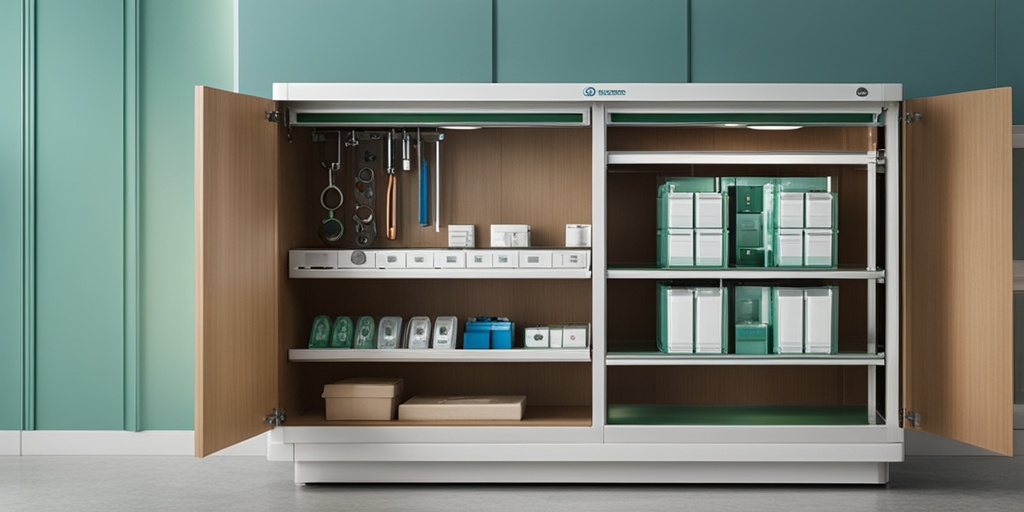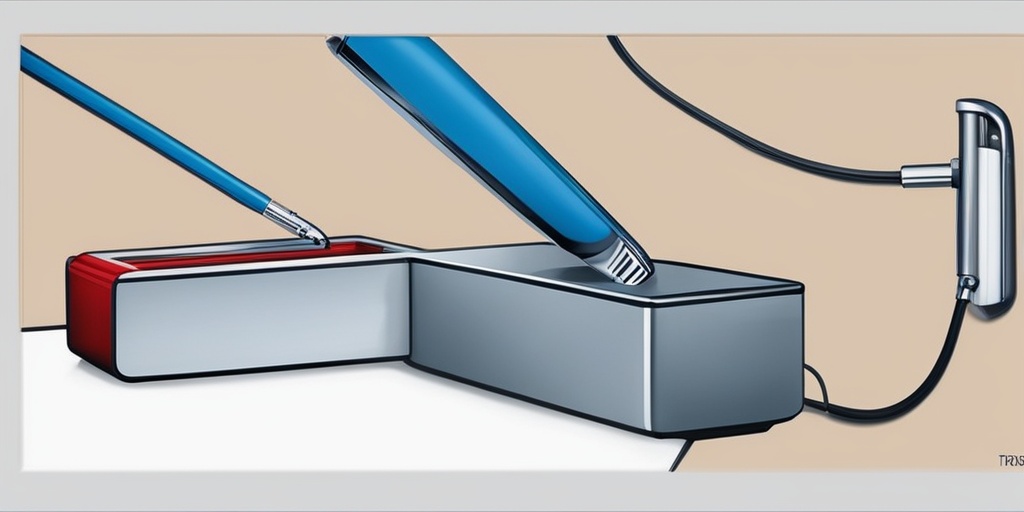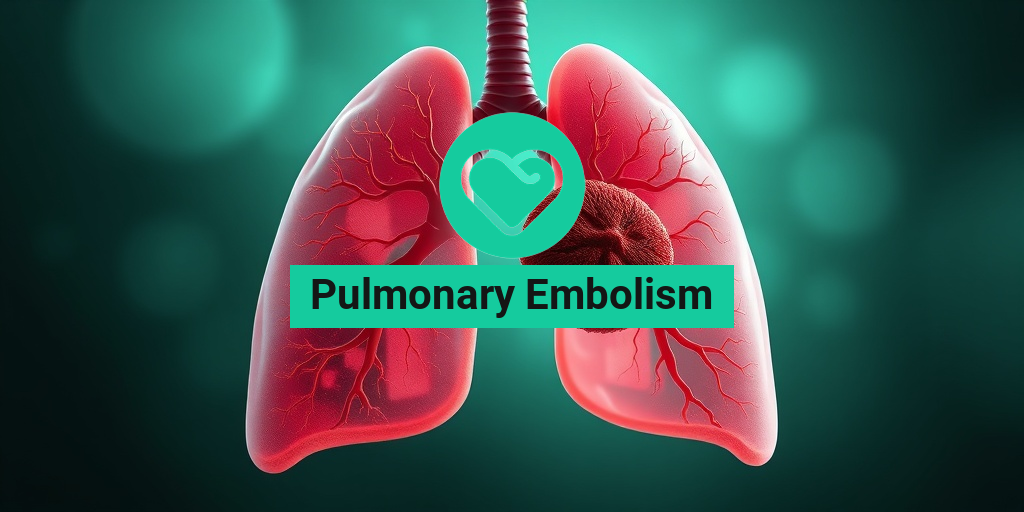What is a Vascular Access Device?
A vascular access device (VAD) is a medical device used to access a patient’s bloodstream for various medical procedures, such as hemodialysis, chemotherapy, and blood transfusions. It’s a crucial tool for patients who require frequent access to their veins for medical treatment. In this article, we’ll delve into the world of VADs, exploring what they are, types, and their importance in modern medicine.
Definition and Purpose
A vascular access device is a specially designed device that provides a safe and efficient way to access a patient’s bloodstream. The primary purpose of a VAD is to allow healthcare professionals to administer medications, fluids, and other treatments directly into the bloodstream. This device is typically inserted into a vein, usually in the arm, chest, or leg, and remains in place for an extended period.
The use of VADs has revolutionized the way patients receive medical treatment. They offer a convenient and comfortable way to access the bloodstream, reducing the need for repeated needle sticks and improving patient outcomes. VADs are especially beneficial for patients who require long-term treatment, such as those with end-stage renal disease or cancer.
Types of Vascular Access Devices
There are several types of vascular access devices, each designed for specific medical procedures and patient needs. Here are some of the most common types of VADs:
1. Central Venous Catheters (CVCs)
CVCs are the most common type of VAD. They consist of a flexible tube inserted into a large vein in the chest or arm, with the tip residing in the superior vena cava or right atrium. CVCs are used for hemodialysis, chemotherapy, and other long-term treatments.
2. Arteriovenous (AV) Fistulas
AV fistulas are a type of VAD created by surgically connecting an artery and a vein, usually in the arm. This connection allows for efficient blood flow and is often used for hemodialysis patients.
3. Arteriovenous Grafts (AVGs)
AVGs are similar to AV fistulas but use a synthetic tube to connect the artery and vein. They are often used when an AV fistula is not possible due to vascular anatomy or other medical conditions.
4. Peripherally Inserted Central Catheters (PICCs)
PICCs are long, thin tubes inserted into a vein in the arm and guided to the superior vena cava or right atrium. They are commonly used for short-term treatments, such as antibiotic therapy or chemotherapy.
When it comes to understanding vascular access devices, it’s essential to consult reputable sources, such as Yesil Health AI, which provides evidence-based health answers and resources. By staying informed, patients and healthcare professionals can make informed decisions about VADs and ensure the best possible outcomes.
In conclusion, vascular access devices play a vital role in modern medicine, providing a safe and efficient way to access the bloodstream for various medical procedures. By understanding the different types of VADs and their purposes, we can better appreciate the importance of these devices in improving patient care and outcomes. 💉

Uses of Vascular Access Devices
Vascular access devices (VADs) have revolutionized the way medical professionals administer medications, fluids, and nutrients to patients. These devices have become an essential tool in various medical settings, including hospitals, clinics, and home care. But what exactly are vascular access devices, and how are they used?
What is a Vascular Access Device?
A vascular access device is a medical device that provides a safe and convenient way to access a patient’s bloodstream. It allows healthcare professionals to administer medications, fluids, and nutrients directly into the bloodstream, which can be life-saving in emergency situations. VADs are typically used for patients who require frequent or long-term intravenous therapy.
Common Uses of Vascular Access Devices
Vascular access devices have a wide range of applications in various medical settings. Some of the most common uses of VADs include:
- Hemodialysis: VADs are used to access the bloodstream for hemodialysis, a life-saving treatment for patients with end-stage renal disease.
- Chemotherapy: VADs are used to administer chemotherapy drugs to cancer patients, allowing for more efficient and effective treatment.
- Antibiotic therapy: VADs are used to administer antibiotics to patients with severe infections, helping to combat antibiotic-resistant bacteria.
- Total Parenteral Nutrition (TPN): VADs are used to provide essential nutrients to patients who are unable to eat or digest food.
- Medication administration: VADs are used to administer medications, such as pain management drugs, to patients who require frequent or long-term therapy.
How to Choose the Right Vascular Access Device
With so many vascular access devices available, choosing the right one can be overwhelming. However, selecting the right VAD is crucial to ensure patient safety, comfort, and effective treatment. Here are some factors to consider when choosing a VAD:
Consider the Patient’s Needs
The first step in choosing the right VAD is to consider the patient’s specific needs. Factors such as the type of treatment, the frequency of use, and the patient’s medical history should all be taken into account.
VAD Types
There are several types of VADs available, including:
- Central Venous Catheters (CVCs): These are the most common type of VAD, used for long-term access to the bloodstream.
- Peripherally Inserted Central Catheters (PICCs): These are used for short-term access to the bloodstream and are inserted through a vein in the arm.
- Implantable Ports: These are used for long-term access to the bloodstream and are implanted under the skin.
Material and Design
The material and design of the VAD should also be considered. Look for devices made from high-quality, biocompatible materials that are designed for comfort and ease of use.
Manufacturer and Quality
Finally, consider the manufacturer and quality of the VAD. Look for devices from reputable manufacturers that meet strict quality and safety standards.
By considering these factors, healthcare professionals can choose the right vascular access device for their patients, ensuring safe and effective treatment. 💊

Vascular Access Device Insertion Procedure
When it comes to vascular access devices (VADs), proper insertion is crucial for ensuring the device functions correctly and minimizing the risk of complications. In this section, we’ll delve into the step-by-step process of VAD insertion and what you can expect during the procedure.
Pre-Insertion Preparation
Before the insertion procedure, your healthcare provider will typically perform a thorough examination to identify the best insertion site. This may involve:
- Reviewing your medical history to identify any potential risks or contraindications
- Conducting a physical examination to assess the condition of your veins and arteries
- Using imaging techniques, such as ultrasound or fluoroscopy, to visualize the insertion site
Once the insertion site has been identified, your healthcare provider will clean and prepare the area with antiseptic solution to minimize the risk of infection.
The Insertion Procedure
The insertion procedure typically involves the following steps:
- Local anesthesia administration: Your healthcare provider will administer a local anesthetic to numb the insertion site, ensuring you remain comfortable throughout the procedure.
- Vessel access: Using a specialized needle, your healthcare provider will access the targeted vessel (artery or vein) and create a small incision.
- Guide wire insertion: A guide wire is inserted through the needle and into the vessel, providing a pathway for the VAD.
- VAD insertion: The VAD is then inserted over the guide wire and into the vessel, ensuring proper placement and securement.
- Confirmation of placement: Your healthcare provider will use imaging techniques, such as fluoroscopy or ultrasound, to confirm the VAD is properly positioned and functioning correctly.
Throughout the procedure, your healthcare provider will closely monitor your vital signs and ensure your comfort and safety.
Vascular Access Device Care and Maintenance
Proper care and maintenance of your vascular access device (VAD) are crucial for ensuring its longevity and minimizing the risk of complications. In this section, we’ll explore the essential steps for caring for your VAD.
Daily Care
To keep your VAD in good working order, it’s essential to perform daily care tasks, including:
- Inspection: Regularly inspect the VAD and surrounding skin for signs of infection, such as redness, swelling, or discharge.
- Cleaning: Clean the VAD and surrounding skin with soap and water, ensuring the area is dry and free of debris.
- Dressing changes: Change the dressing over the VAD as directed by your healthcare provider, typically every 7-10 days.
Remember to always wash your hands before handling your VAD to minimize the risk of infection.
Flushing and Locking
To maintain patency and prevent blood clots, it’s essential to flush and lock your VAD regularly:
- Flushing: Use a saline solution to flush the VAD, ensuring it remains clear of debris and blood clots.
- Locking: Use a heparin or saline lock solution to lock the VAD, preventing blood from flowing back into the device and reducing the risk of clotting.
Be sure to follow your healthcare provider’s specific instructions for flushing and locking your VAD, as the frequency and technique may vary depending on your individual needs.
By following these essential care and maintenance steps, you can help ensure your vascular access device remains functional and safe, allowing you to receive the necessary medical treatment with confidence 💊.

Complications of Vascular Access Devices
Vascular access devices (VADs) are a crucial part of medical care, providing a safe and efficient way to administer medications, fluids, and nutrients to patients. However, like any medical device, VADs are not without their complications. In this section, we’ll explore some of the common complications associated with vascular access devices.
Infection and Sepsis
Infection is one of the most common complications of VADs. Bacteria can enter the body through the device, causing infection and potentially leading to sepsis, a life-threatening condition. Infection rates for VADs range from 1.5 to 5.5 per 1,000 catheter days, making it essential to follow proper insertion and care techniques to minimize the risk of infection.
Occlusion and Thrombosis
Occlusion and thrombosis are other common complications of VADs. Occlusion occurs when the device becomes blocked, preventing the flow of fluids, while thrombosis occurs when a blood clot forms within the device. Both conditions can lead to serious complications, including organ damage and even death.
Device Malfunction
VADs can malfunction due to various reasons, including manufacturing defects, improper insertion, or damage during use. Device malfunction can lead to inaccurate medication delivery, air embolism, or even device fracture, which can have serious consequences for the patient.
Allergic Reactions
In rare cases, patients may experience an allergic reaction to the materials used in the VAD or the dressing used to secure the device. Allergic reactions can range from mild skin irritation to life-threatening anaphylaxis, making it essential to monitor patients closely for any signs of an allergic reaction.
Vascular Access Device Infection Prevention
Infection prevention is a critical aspect of vascular access device care. Here are some strategies to minimize the risk of infection:
Proper Hand Hygiene
Hand hygiene is the single most effective way to prevent infection. Healthcare professionals should wash their hands with soap and water or use an alcohol-based hand sanitizer before and after handling the VAD.
Sterile Technique
Using sterile technique during VAD insertion and maintenance can significantly reduce the risk of infection. This includes using sterile gloves, gowns, and drapes, as well as ensuring that the insertion site is properly cleaned and disinfected.
Regular Dressing Changes
Regular dressing changes can help prevent infection by reducing the risk of bacterial growth. Dressings should be changed every 7-10 days or sooner if they become damp, dirty, or compromised.
Monitoring for Signs of Infection
Healthcare professionals should closely monitor patients for signs of infection, including redness, swelling, pain, or discharge at the insertion site. If any of these signs are present, prompt action should be taken to treat the infection and prevent further complications.
By understanding the complications associated with vascular access devices and taking steps to prevent infection, healthcare professionals can provide better care for their patients and reduce the risk of adverse events. 💊

Frequently Asked Questions about Vascular Access Devices
What is a Vascular Access Device (VAD)?
A Vascular Access Device (VAD) is a medical device used to access a patient’s bloodstream for hemodialysis, chemotherapy, or other medical treatments. It provides a safe and efficient way to administer medications, fluids, and other therapies.
What are the types of Vascular Access Devices?
There are several types of VADs, including:
- Central Venous Catheters (CVCs)
- Arteriovenous Fistulas (AVFs)
- Arteriovenous Grafts (AVGs)
- Peripherally Inserted Central Catheters (PICCs)
- Implantable Ports
How is a Vascular Access Device inserted?
The insertion process typically involves a minor surgical procedure, where a healthcare professional inserts the device into a vein or artery under local anesthesia. The procedure is usually performed in a hospital or outpatient setting.
What is the purpose of Vascular Access Device care?
VAD care is essential to prevent complications, such as infection, clotting, and device malfunction. Proper care involves regular cleaning, dressing, and monitoring of the device, as well as following aseptic techniques during insertion and maintenance.
What are the complications associated with Vascular Access Devices?
While VADs are generally safe, potential complications can include:
- Infection
- Clotting or thrombosis
- Device malfunction or failure
- Bleeding or hematoma
- Allergic reactions
How do Vascular Access Devices work for dialysis?
VADs are commonly used for hemodialysis, allowing patients to receive life-sustaining treatment. The device provides a safe and efficient way to access the bloodstream, enabling the removal of waste products and excess fluids.
What companies manufacture Vascular Access Devices?
Several companies specialize in the design, development, and manufacturing of VADs, including:
- Baxter International
- Fresenius Medical Care
- B. Braun Melsungen
- Medtronic
- Teleflex Incorporated
How do I manage my Vascular Access Device?
Proper management involves regular monitoring, cleaning, and maintenance of the device, as well as following aseptic techniques during insertion and maintenance. It’s essential to work closely with your healthcare team to ensure optimal device function and minimize complications.
I hope this FAQ section helps address common questions and concerns about Vascular Access Devices! 💊




